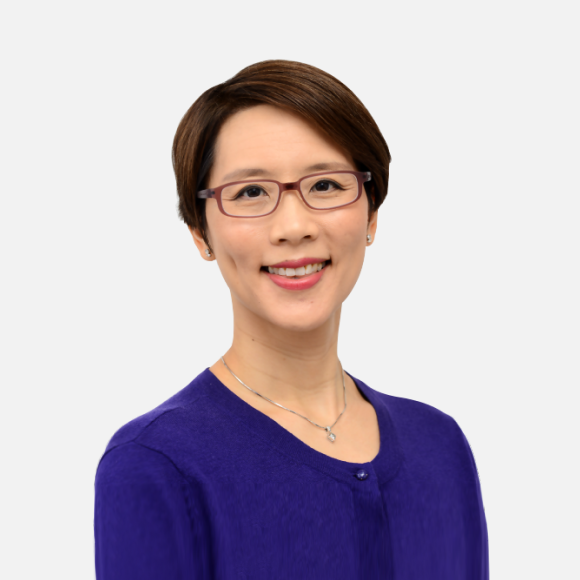
By Ivy Fung, Women in Blockchain Asia
In ancient times, the prevailing belief was that men primarily hunted, while women gathered due to perceptions of men’s physical strength and women’s childcare responsibilities. However, recent archaeological discoveries challenge this notion, revealing that roughly 50% of remains found near significant hunting tools belonged to females. This suggests active female participation in hunting during ancient times, emphasising women’s equal physical capabilities. In today’s world, where machinery diminishes the relevance of physical strength, it is logical to conclude that men and women are equally capable and should, therefore, receive equal compensation.
Nevertheless, reports indicate that the gender wage gap endures. Surprisingly, this wage disparity is most pronounced in finance-related professions, despite the absence of any physical strength requirements in these roles. These reports, often based on extensive samples, frequently overlook crucial pay factors like job titles, prior experiences, location, and education levels. Nevertheless, accounting for these factors significantly narrows the gender wage gap to just $0.01, indicating nearly equal compensation for men and women performing identical tasks with similar backgrounds.
So, is the gender wage gap just a matter of perception? Far from it! Let us delve deeper into the statistics.
In the United States, the gap is 17%, while in South Korea, it soars to a staggering 31.1%, and in Spain, it’s a mere 3.7%. This variation highlights that the gender wage gap is undeniably real, but its extent varies depending on the location and industry.
Zooming into the Science, Technology, Engineering, and Math (STEM) industry reveals significant disparities
STEM jobs offer nearly 60% higher salaries than non-STEM positions. However, around two-thirds of the STEM workforce comprises men, with 72% of science and engineering occupations, which generally offer higher pay in STEM, being dominated by men. Closer to home, in the Philippines, just 41% of STEM graduates are women, and only 36.6% of them secure STEM roles within a year.
Several key factors contribute to this disparity:
- Low Female Enrollment in STEM: Across various countries, only 18% of girls choose STEM majors, compared to 35% of boys. This gender imbalance in educational choices directly impacts the number of women entering the job market in STEM fields.
- Gender Bias and Family Duties: Deep-rooted gender bias and societal expectations that women will prioritise family over their careers hinder female progression in STEM. Additionally, policies like extended paid parental leaves, while beneficial, often inadvertently impact women’s career trajectories. Employers’ reluctance to promote women exacerbates this issue.
- Lack of Female Role Models: The absence of female role models in male-dominated STEM fields poses a significant challenge. Young women lack inspiring figures who demonstrate that they can balance a successful career and family life, similar to their male counterparts.
Interestingly, in my own personal survey that was conducted with over 40 various working executives in Southeast Asia, the results revealed that almost half of male respondents acknowledge the existence of a wage disparity. Of those acknowledging the disparity, nearly half attribute it to historical disparities in men’s higher education, a quarter believe it’s influenced by societal perceptions that women will prioritise family over their careers, and almost a fifth suspect favoritism based on gender.
Prevailing culture of the gender wage gap further erodes women’s self-confidence.
When questioned about their response to facing pay disparities, most women tend to either accept the status quo or opt to become homemakers. Majority of them did not consider entrepreneurship as an alternative, and it’s noteworthy that those who pursue entrepreneurship typically do not experience pay inequality. This pattern suggests a limited desire among women to venture into entrepreneurship.
A female CEO of a game development company that I once interviewed also highlighted the issue of unequal pay for women performing the same job with equivalent experience. She based her observations on the pay histories of women she had interviewed. Notably, this wage disparity is more pronounced in less developed areas. Additionally, female candidates tend to be less assertive in negotiating better pay.
Closing the Gender Wage Gap
Transparency in Pay Structures
To contribute to narrowing the gap, many of the male respondents from my survey believe that implementing a transparent pay scale represents a reasonable solution.
Additionally, one in five consider raising awareness about the issue as crucial, with 55.56% of them being men. In line with these findings, a male tech employee at a software development multinational company emphasised the importance of transparent pay structures. He explained that such transparency allows employees to ensure they are fairly compensated without necessarily knowing the exact pay of their colleagues. This transparency not only fosters workplace harmony but also instills confidence in the fairness of compensation practices. He expressed optimism about the prospect of more women assuming CEO roles in the future, given the increasing presence of women in the STEM workforce.
The Value of Diversity in the Workplace
Research also supports the benefits of diversity in the workplace, with 44% of Fortune 500 companies recognising that diverse teams enhance innovation and agility, while 51% believe diversity improves employee engagement. These factors are essential criteria for a successful STEM workforce, underscoring the value of a balanced workplace.
The Role of Men in Promoting Awareness
The survey results, where 70% of respondents are men, clearly indicate the predominance of men in STEM industries. Men are also notably more vocal about the gender pay gap and express a willingness to address and narrow this gap. This data highlights the need for continued efforts to promote gender equality and diversity in STEM fields.
In conclusion, it’s crucial to inspire young girls to embrace STEM careers, aiming for high-paying positions, and having strong female role models to lead the way. The progress made, evident from controlled surveys, indicates our society’s efforts. However, the journey is far from over; we must extend our reach to include more individuals in our mission.
Lastly, to all women, your voice matters. Stand up and speak out. Sometimes, a simple act of asserting yourself can pave the way for recognition and change. In reshaping the future, we must rewrite history today by fostering greater participation of women in STEM fields.
About the writer:
Ivy Fung is a blockchain domain trainer and the Vice-President of Women In Blockchain Asia (WIBA), where she advocates for a female-friendly ecosystem through education and collaborations. WIBA has successfully organised and fostered women’s engagement in webinars and hackathons, creating a nurturing ecosystem with a high participation rate among women.
The views and recommendations expressed in this article are solely of the author/s and do not necessarily reflect the views and position of the Tech for Good Institute.






